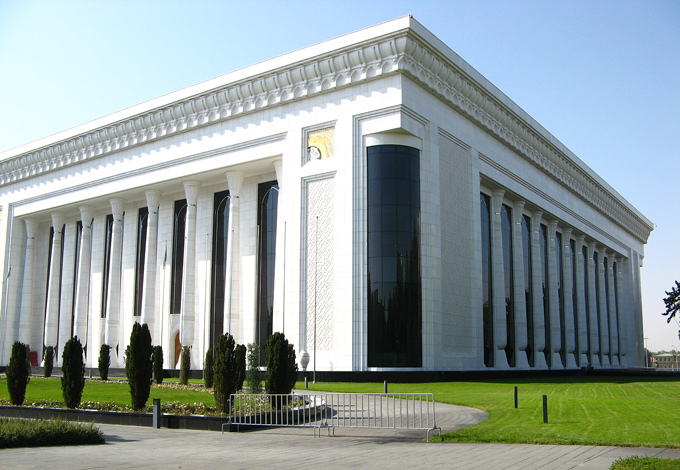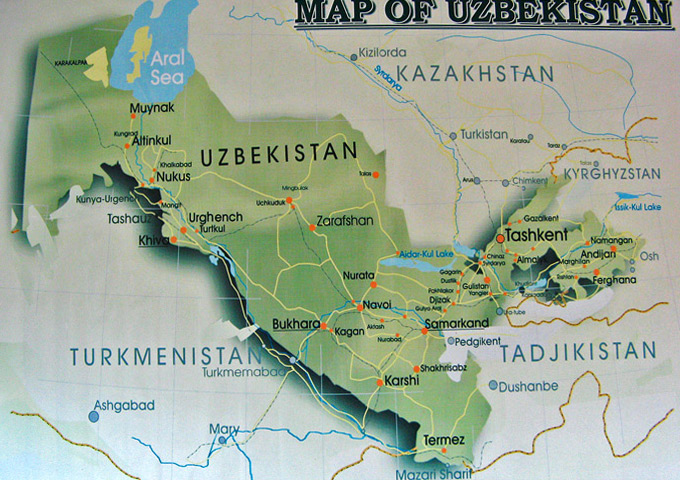
Sprawling Tashkent is the most cosmopolitan and modern city in Uzbekistan. Alas, there is a sad reason for its modernity. A strong earthquake in 1966 damaged much of the historic part of Tashkent. It was rebuilt as a model Soviet city of wide streets planted with shade trees, parks, immense plazas for parades, fountains, monuments, and acres of apartment blocks. By 1991, when the Soviet Union collapsed, Tashkent was the fourth-largest city in the USSR and a learning center in the fields of science and engineering. However, because of the earthquake, the redevelopment that followed it and post-1991 construction, there are few structural remains of Tashkent’s ancient history. Little can be found that marks the city as a trading point on the historic Silk Road.
One city spectacle we made no attempt to see, because of photo restrictions and time constraints, was the Tashkent Metro. From what we’ve read, the Metro ought to be touted as a prime tourist attraction, so beautifully decorated is it. However, Uzbek law forbids taking pictures inside the Metro or in any of the stations as they are considered military installations. You’ll have to search on the Internet for photos --- and they are numerous. One such example is provided below --- though you may be arrested for viewing it:
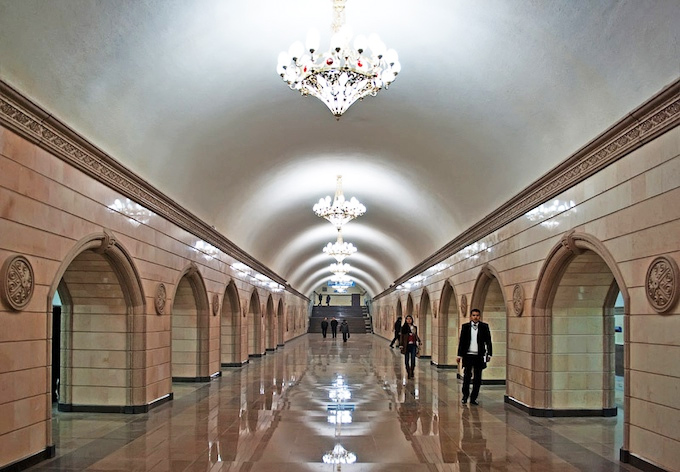
The weather was damp and dreary upon our noon arrival in Tashkent. Nevertheless, having joined our guide and driver, we were soon whizzing across the city, bound for our first stop, the U.S. Embassy. There, Jennifer met her counterparts in person for the first time, we met and thanked the man who invited us to Uzbekistan (every visitor is required to have someone INVITE them to the country), and we enjoyed lunch in a most attractive environment.
After that, it was time for sight-seeing in “Old Tashkent,” as it is called. What we visited was a newly-remodeled complex known as the Khast Imam Square. It consists of many buildings, including mosques, madrassas, mausoleums and a library of ancient Muslim relics. This is a major religious center. Age-old crafts are practiced here and the end results are on display and for sale.
As we cannot with confidence identify each building, the photos are merely presented chronologically. We entered the complex between these 150 ft tall minarets:
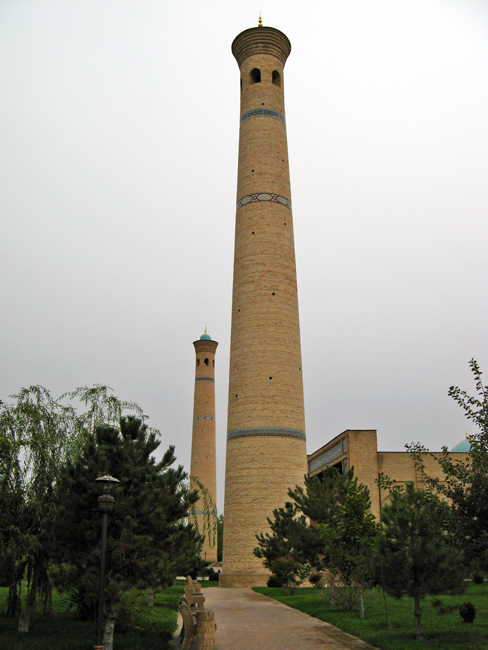
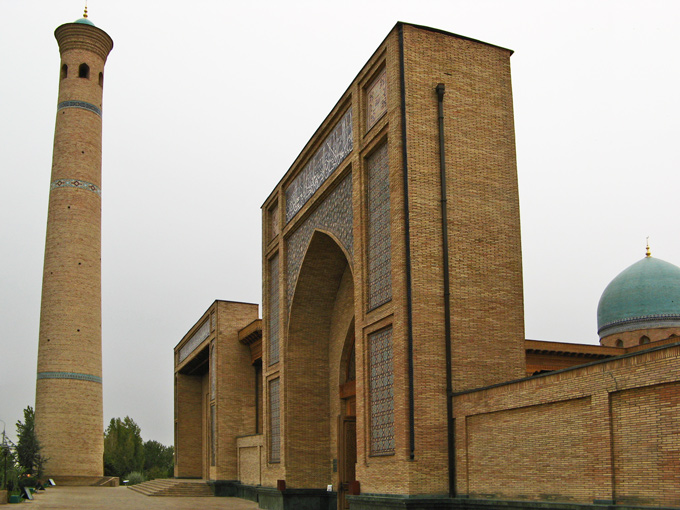
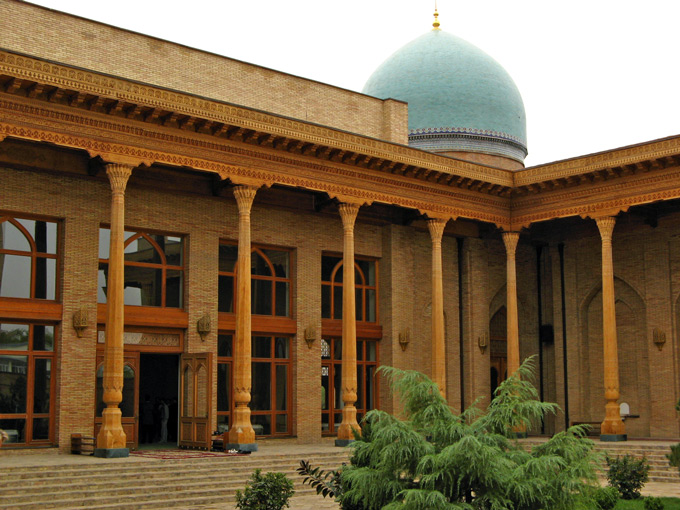
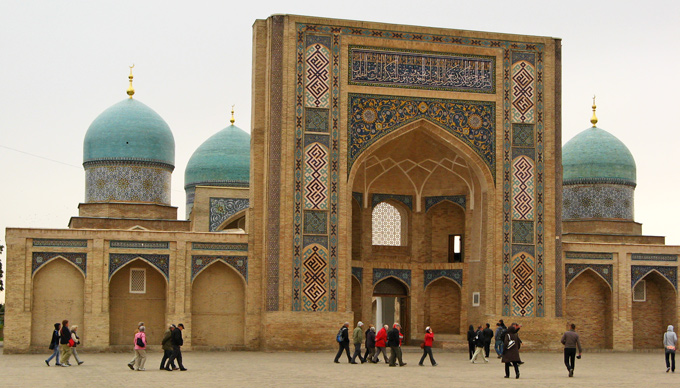
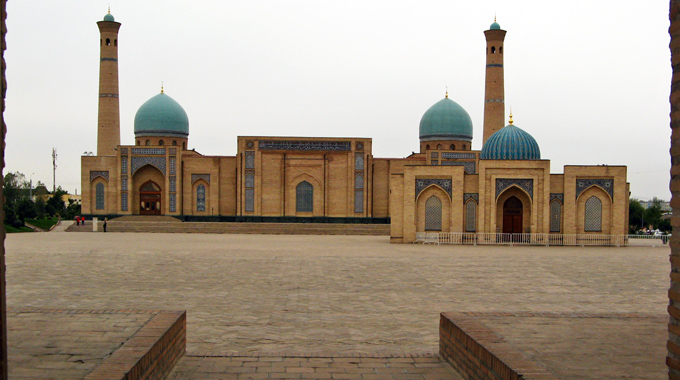
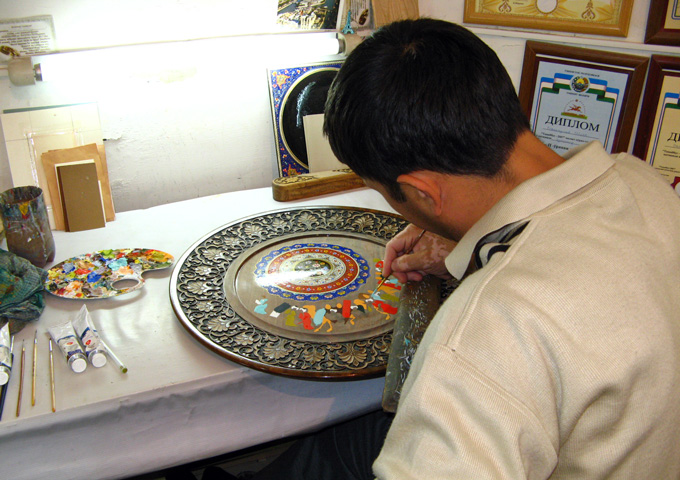
Upon exiting the Square, we found, with remarkable ease, where the driver had parked our vehicle:
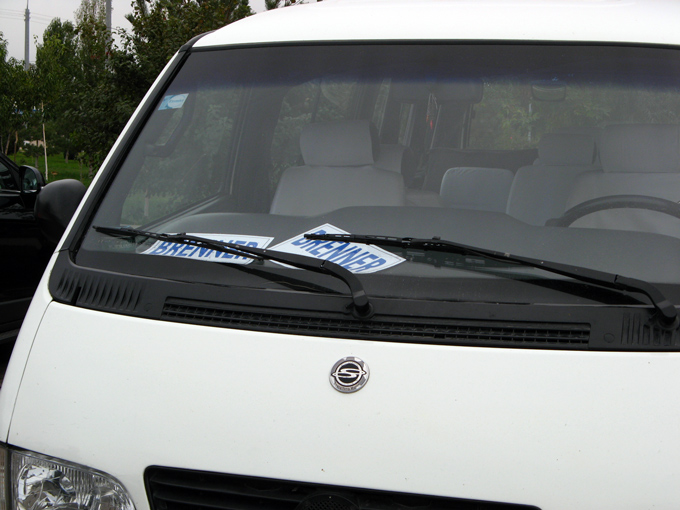
Soon enough, he made his appearance and off we went again. This time, the ride was short as we disembarked within walking distance of Chorsu Bazaar, Tashkent’s most famous farmer’s market. On the edge of “Old Tashkent,” it is vast, as evidenced by this Internet aerial photo:
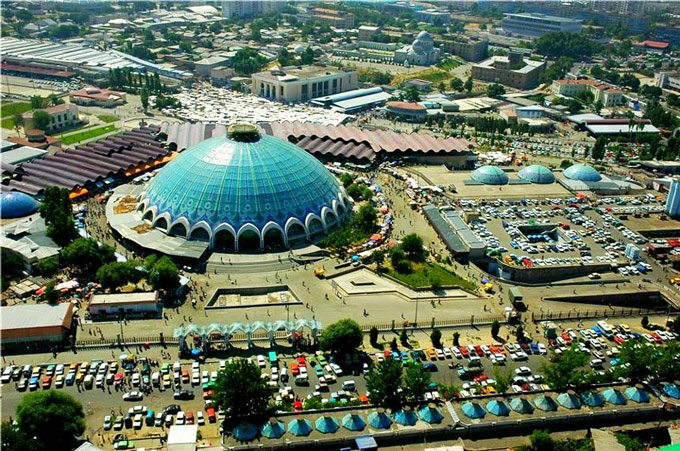
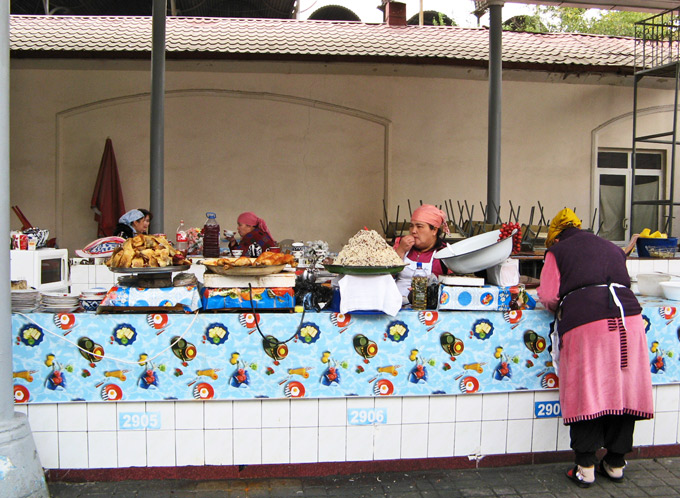
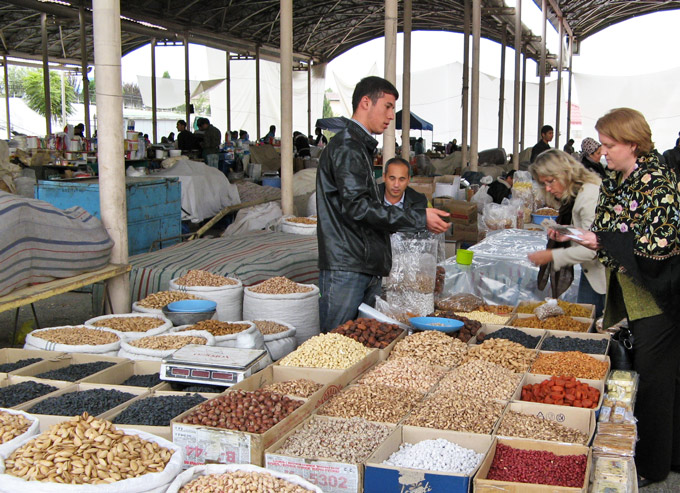
With the drizzly afternoon waning fast, we left Chorsu for a new rendezvous with our driver. A burst of sunlight interrupted our walk and made us pause in admiration:
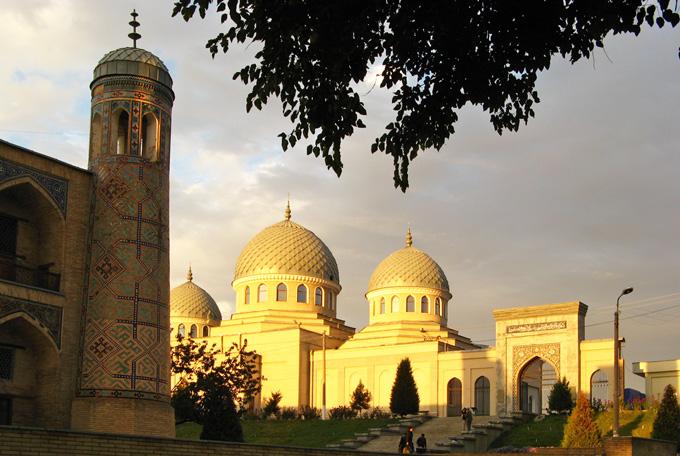
An hour later, we were checked into our accommodations at the Uzbekistan Hotel --- THAT despite our reservations being misplaced and everyone’s attention being distracted by a raucous, jam-packed wedding reception. Soon, we had time to exchange some money at the hotel’s cashier. Incredibly, investing only $50 U.S., we were “rolling in dough”:
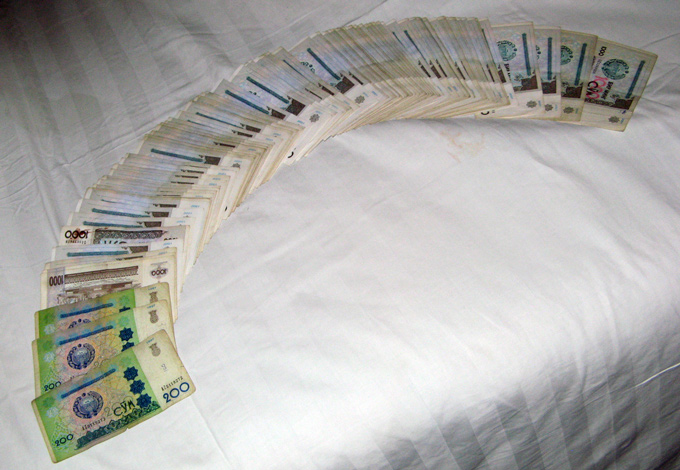
On our last day in Uzbekistan, we had more touring opportunities before our 4 pm departure to Bishkek. We had driven past an eye-catching Russian Orthodox Church on our first day in Tashkent and decided to give it a closer look:
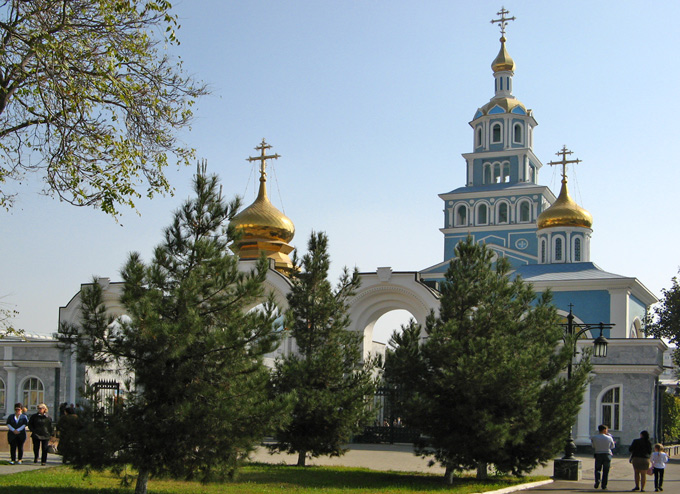
The main church was beautiful and quite substantial. We headed for its interior:
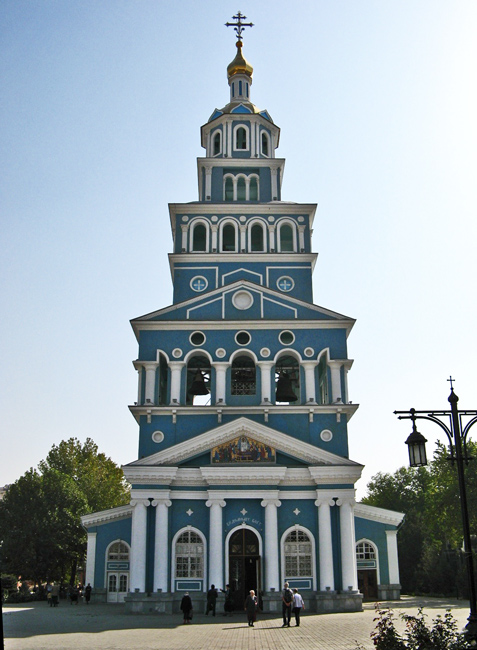
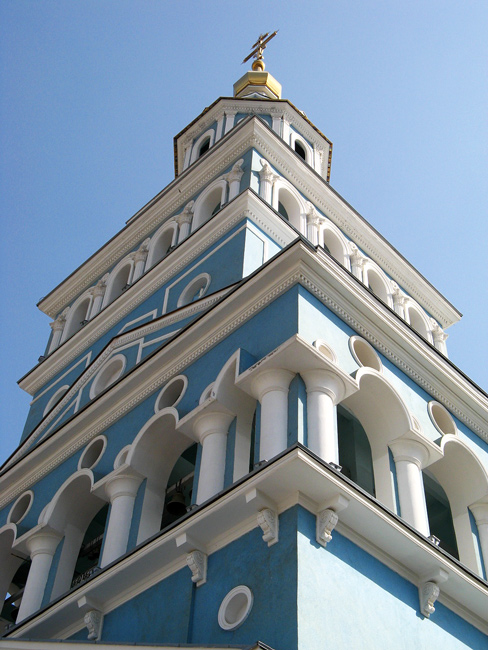
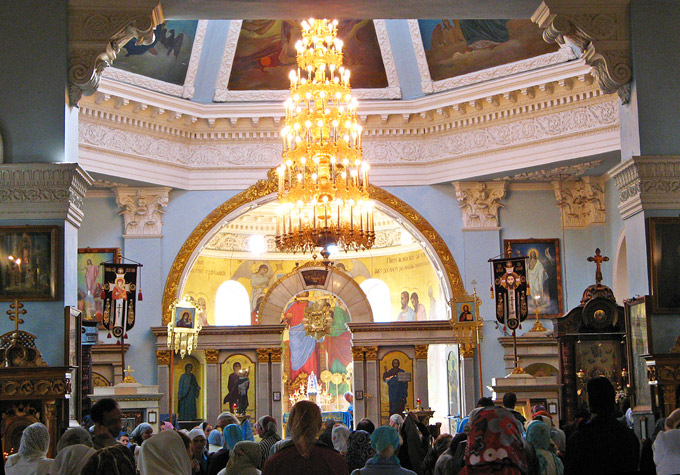
Still searching for a better shot of the church, I had to circle around to its sunlit backside to find it:
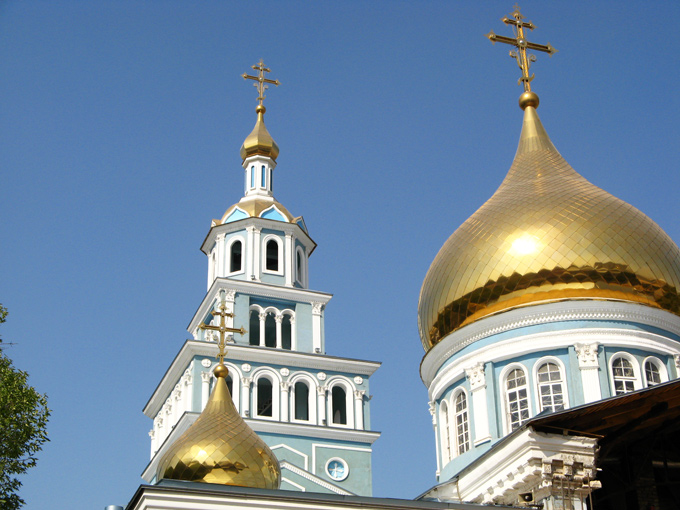
For our final Tashkent experience, our driver dropped us off about a mile from our hotel. We strolled a pleasant stretch of parkway, dotted with monuments, fountains and flowers, to reach our hotel and reclaim our luggage.
The Independence and Humanitarianism Monument was built shortly after Uzbek independence in 1991. It features a globe with larger-than-life Uzbekistan joining the world. No, the statues are not of Mary and Jesus --- if that is what you thought. In this predominantly Muslim country, they are the Happy Mother, admiring her son --- symbols of the country’s future:
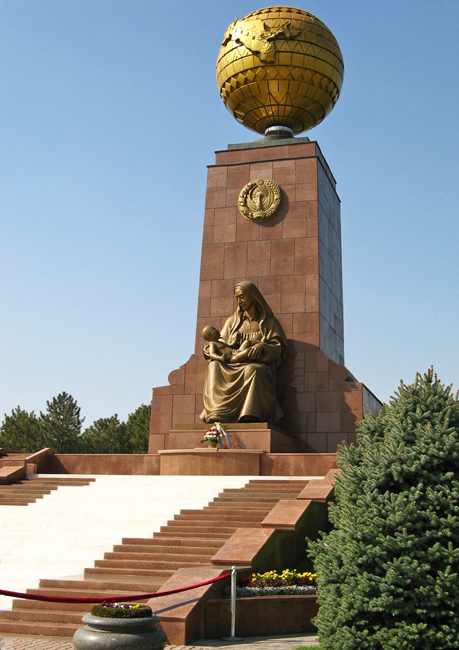
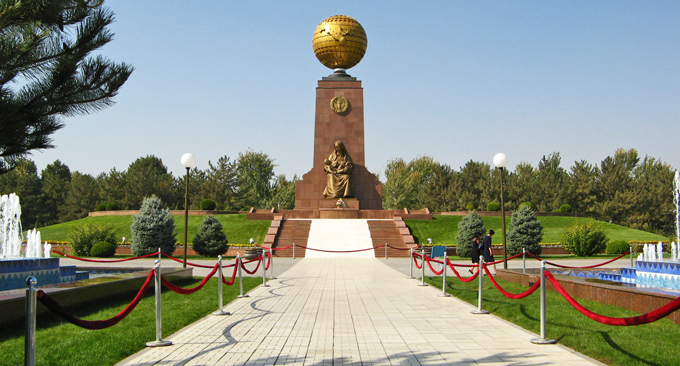
A short distance away is the Independence Arch (actually, the Ezgulik Arch):
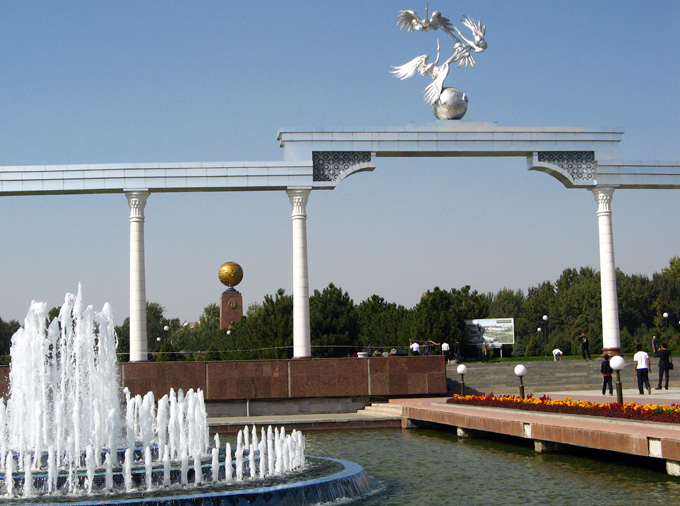
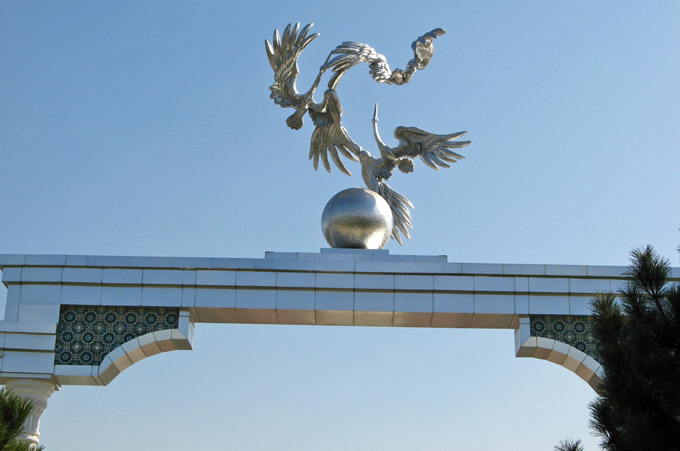
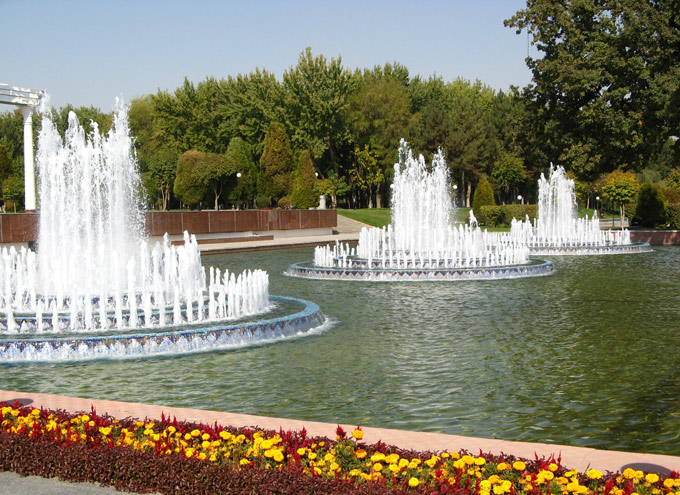
Closing in on our hotel, we crossed a square named after Amir Temur:
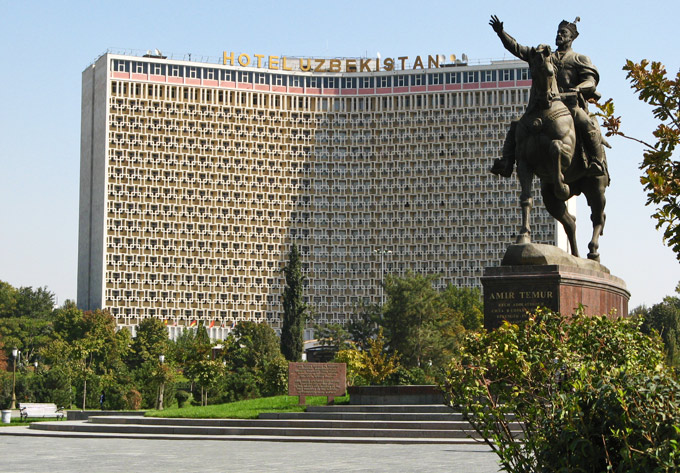
Just across the street from our hotel is the Congress Center, representative of the many handsome buildings in Tashkent:
